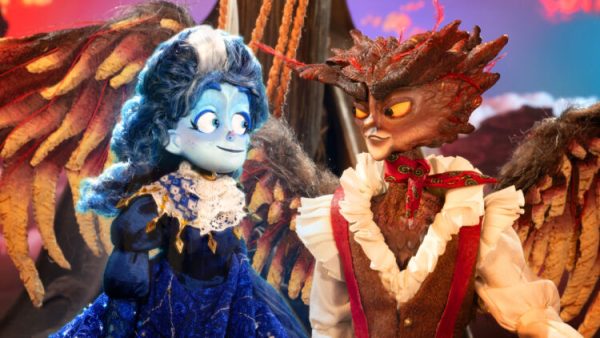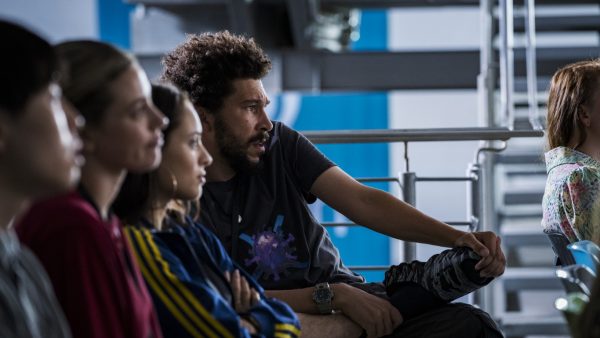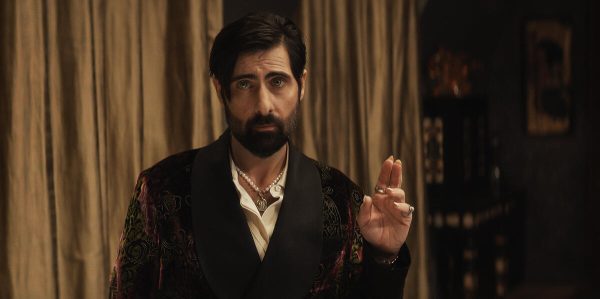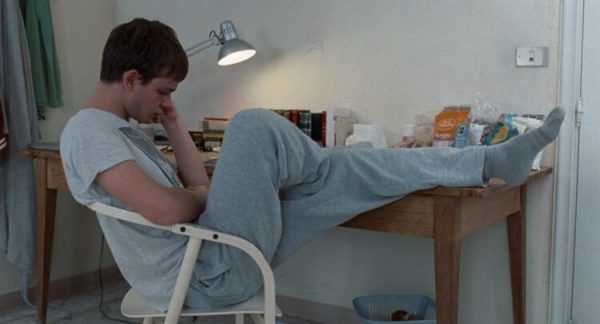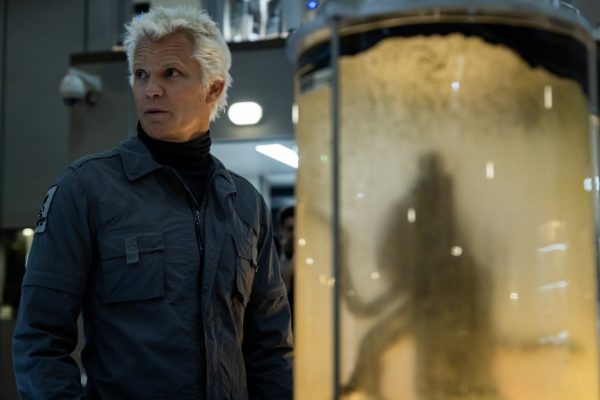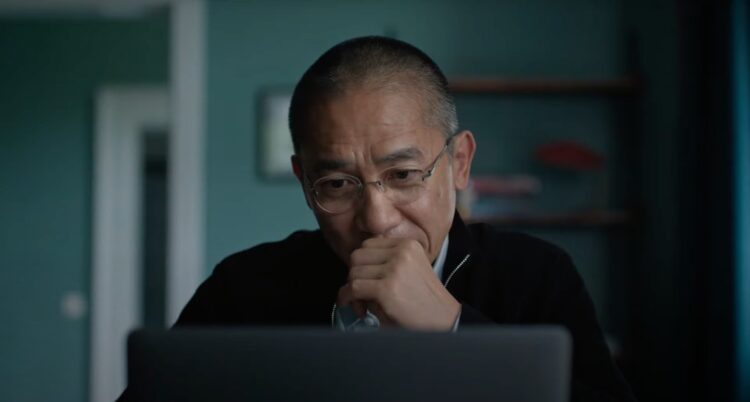
Hungarian director Ildikó Enyedi is best known for her 2017 Golden Bear-winning film On Body and Soul, where an unlikely pair of characters met in a dream and, as deer, fell in love. This remarkably tender Berlinale winner is, in many ways, the precursor to Enyedi’s newest film, notwithstanding the fact that in-between came The Story of My Wife (2021), a period drama of an obsessive love affair starring Léa Seydoux. Not to say the latter is irrelevant: the English-language debut allowed Enyedi to expand the details of her singular worlds beyond language and cement herself as a European auteur to whom actors flock. While Silent Friend stars the indomitable Tony Leung (and also Seydoux in a small role), the real star of this film is a ginkgo tree. If On Body and Soul was fauna, Silent Friend is flora.
Professor Tony Wong (Leung) is a neuroscientist researching consciousness in babies; Silent Friend‘s opening shows his experiment as an EEG headset translates brain data into spectral visualizations gracing the whole screen. He’s in Marburg, Germany, presenting his progress to students and colleagues, but soon enough COVID-19 would confine him to the campus grounds with a centuries-old ginkgo biloba tree, the centerpiece of the university’s botanical gardens. At first the narrative seems preoccupied with consciousness and perception––the big question that is as existential as it is scientific––but when the professor says “research is just a series of attempts to find metaphors,” one knows they’re not in for a peer-reviewed article version of a film. There is science and there is fiction in Silent Friend, but per sci-fi, it’s reminiscent of Kogonada’s After Yang in style––unassumingly tender and so very grounded.
Three parallel timelines run across Silent Friend, with the ginkgo tree as a consistent presence––an object of fascination and a quiet observer of lives private and public. In 1908, a black-and-white 35mm world envelops Grete (Luna Wedler), the first female student at the university, in a tight embrace. Her admission is not without any pushback, but her brilliance perseveres as she devotes more of her time to researching plants outside taxonomy. Further, Grete’s analogue practices (including, at one crucial point, photography) focus on the exterior, aesthetics, shapes, and forms of plants––not for a particular fascination with surfaces, but as an overlooked gesture of appreciation, as science tends to objectify more than admire. Cinematographer Gergely Pálos (who has previously worked with Roy Andersson) doesn’t rely on the 35mm look to shape the mood of the early 20th century; he instead lets us see through Grete’s eyes (and visor) a world of wonder in a single cabbage. When jumping to 1972, Pálos resorts to a vivid, glimmering 16mm aesthetic to convey the possibilities of post-1969 university life, where the shy Hannes (Enzo Brumm) finds himself smitten with a girl and her geranium plant.
Humans in Silent Friend are humbled when they finally accept the falsity of their reign. If plants observe us just as we observe them, what do they see? While Enyedi doesn’t ask the straightforward question, the film’s tripartite narrative comes back to it again and again. Together with Pálos, the Hungarian director might have just invented a new cinematic grammar which decenters the human face––decisively, the sustained attention to the ginkgo tree (the actual protagonist) needs a new way of looking, unshackled from the camera’s anthropocentric perspective. What’s a close-up of a tree, then? Is it a frame of the trunk up-close, or the bark covering it? A branch? Leaves? Or of one single leaf? Pálos tries all of the above, familiarizing the camera with ginkgo physiognomy so well that even a wide shot of it feels as impactful as a facial close-up.
Immersing yourself in the daze of Silent Friend is like accepting a joyous gift, even if you don’t ultimately believe that plants can or want to communicate with us. With her exquisite new work, Ildikó Enyedi has achieved the improbable goal of making non-human, humanistic cinema that is inclusive and reverent without falling into idolization (of plants) or condemnation (of humans). Maybe this is what the ecological film of the future should be: a tender romance between species (humans and plants, or cinema and audiences).
Silent Friend premiered at the 2025 Venice Film Festival.
The post Venice Review: Tony Leung Finds a Flora Connection in Ildikó Enyedi’s Silent Friend first appeared on The Film Stage.



